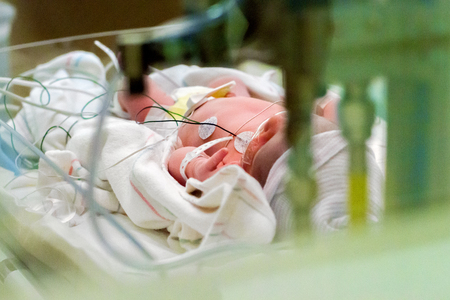
Premature labor, also known as preterm labor, occurs in about 12% of pregnancies. In premature labor, contractions begin prior to 37 weeks gestation and cause the cervix to open, which can lead to premature birth. The earlier you are able to identify preterm labor symptoms, the more likely it is your OBGYN can intervene.
Symptoms are generally consistent with labor and include contractions at intervals of 10 minutes or less. Contractions may feel similar to menstrual cramps focused in your lower abdomen or a backache. Typically, back labor presents as discomfort in your lower back that may be constant or intermittent. However, changing positions or applying heat will not provide relief. Other indicators of preterm labor may consist of increased vaginal discharge, bleeding and pressure in your pelvis or vagina.
Braxton-Hicks contractions can mimic real labor. Cramping that is irregular and more than 10-12 minutes apart are probably what is commonly referred to as false labor. To check your contractions, lie down and place your finger tips on your abdomen. Productive contractions will cause your uterus to tighten and soften all over.
If you have a family history of preterm labor, you may be at a higher risk. Also, certain health conditions- such as preeclampsia, high blood pressure and diabetes- during pregnancy can increase your chances of going into premature labor. Other factors than can raise your risk of preterm labor include carrying multiples and becoming pregnant through in vitro fertilization.
Following good prenatal care, including nutrition and regular OBGYN appointments, can reduce your risk of premature labor. It’s important to avoid highly stressful situations and rely on social support. You should also avoid smoking, alcohol and drugs during pregnancy.
You should call your OBGYN if you feel you are experiencing any symptoms of premature labor. It’s likely your doctor will send you to the hospital to monitor your contractions, check your baby’s heart rate and examine your cervix to determine whether or not it’s opening. If you are diagnosed with preterm labor, your doctor may give you medicine to attempt to stop contractions or speed up your baby’s lung development.
In the event your OBGYN is unable to stop labor, your doctor will prepare to deliver your baby. Approximately 10% of all babies born will be premature. Premature babies are at a greater risk of certain health problems, but most go on to live normal, healthy lives. Your preemie will likely spend time in the neonatal intensive care unit (NICU) following delivery where they can be observed for any complications.





